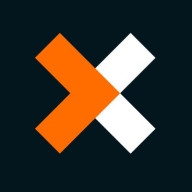

Nintex Process Platform and Tidal by Redwood are workflow automation solutions serving different user needs. Nintex has an edge in creating complex workflows without extensive coding, while Tidal stands out for managing cross-platform workloads with flexible scheduling.
Features: Nintex Process Platform offers scalability, integration ease, and a drag-and-drop workflow design. It manages content within SharePoint efficiently and supports mobile approval scenarios with LazyApproval, and external system connectivity actions. Tidal by Redwood allows users to manage cross-platform workloads, offering flexible scheduling and advanced job dependencies. Its user-friendly interface and robust job automation features enhance process efficiency and uptime significantly.
Room for Improvement: Nintex Process Platform could benefit from better logging and notifications and improved mobile platform support. Enhancing the forms' functionality and error reporting would offer a seamless experience. Tidal by Redwood could improve its user interface, reporting capabilities, and speed. New users encounter a learning curve, and more platform integrations are needed for a holistic experience.
Ease of Deployment and Customer Service: Nintex Process Platform supports on-premises and public cloud environments, offering deployment flexibility. Its technical support varies, with responsiveness differing among users. Tidal by Redwood focuses on on-premises deployment and includes some cloud capabilities. Its technical support is seen as efficient, though suggestions exist for streamlining the service further.
Pricing and ROI: Nintex Process Platform is often viewed as expensive, with a transition towards subscription-based licenses. Users report quick ROI due to efficiency gains despite costs. Tidal by Redwood offers transparent, flexible licensing perceived as cost-effective, supporting enterprise growth without significant cost increases. Its predictable pricing structure aids steady budgeting, enhancing control over expenses while delivering substantial returns in time savings and productivity boosts.
| Product | Market Share (%) |
|---|---|
| Nintex Process Platform | 0.3% |
| Tidal by Redwood | 4.7% |
| Other | 95.0% |


| Company Size | Count |
|---|---|
| Small Business | 17 |
| Midsize Enterprise | 6 |
| Large Enterprise | 24 |
| Company Size | Count |
|---|---|
| Small Business | 3 |
| Midsize Enterprise | 6 |
| Large Enterprise | 38 |
Nintex Process Platform offers no/low-code development with system integrations and efficient workflow management, ideal for complex business processes. It's known for its scalable workflows, data management through SmartObjects, and a user-friendly visual designer.
Nintex Process Platform enables organizations to automate processes with ease, supporting electronic forms, digital transformation, and seamless department collaboration. Users on SharePoint and other integrated systems leverage its extensive workflow capabilities for approvals, onboarding, and information capture. While its current framework might benefit from performance enhancements and improved management console usability, it remains a strong choice for providing scalable solutions across industries.
What are the key features of Nintex Process Platform?Companies in sectors like government, HR, and financial services implement Nintex Process Platform for its ability to streamline and connect internal processes. It supports approval workflows, notifications, and data capturing, proving its versatility for diverse business needs. However, challenges with document conversion, performance, and cloud feature parity suggest room for enhancements, particularly in industries handling complex workflows.
Tidal Software is a leading provider of enterprise workload automation solutions that orchestrate the execution of complex workflows across systems, applications and IT environments. With a comprehensive portfolio of products and services, Tidal optimizes mission-critical business processes, increases IT cost efficiencies and satisfies legal and regulatory compliance requirements. Hundreds of customers around the world count on Tidal for modernizing their workload automation and driving their digital transformation. Tidal Software is headquartered in Chicago with offices in Houston, London, Minsk, Belarus and Chennai, India. For more information, visit tidalsoftware.com.
We monitor all Workload Automation reviews to prevent fraudulent reviews and keep review quality high. We do not post reviews by company employees or direct competitors. We validate each review for authenticity via cross-reference with LinkedIn, and personal follow-up with the reviewer when necessary.